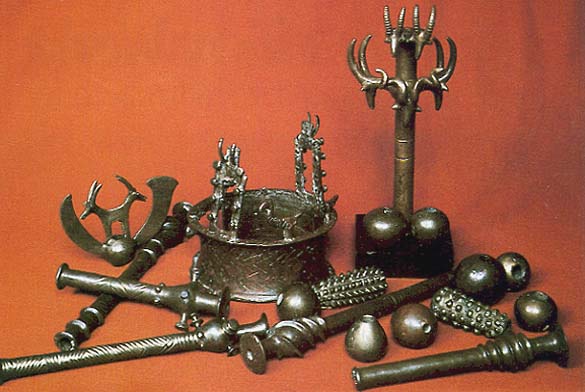Image Details

Zev Radovan, courtesy Israel Museum
Copper ceremonial objects belong to a magnificent hoard of more than 400 copper pieces found in the Judean wilderness near the Dead Sea. Hidden in a cave in Nahal Mishmar, the hoard dates to the Chalcolithic period (fourth millennium B.C.). The beauty and workmanship—unique for its time but extraordinary at any time—make this the earliest and most important collection of metal artifacts found anywhere in the world.
The objects may have been used in cult rituals at a nearby temple. At the center is a “crown”; to the right is a standard with ibex heads; other implements include mace heads and scepters.
The Nahal Mishmar hoard demonstrates the exceptional sophistication of copper metallurgy that had developed in fourth millennium Palestine. The objects were made by what is called the “lost wax” process. Wax was carved in the shape of the artifact, a clay mold was then built around the wax model; the wax was melted away and, finally, molten copper, sometimes with an admixture of arsenic, was poured into the cavity.
